We recently explored how to learn to read the notes of a piece of music. But that’s only half the battle! We can’t read music until we learn the rhythms too. Counting involves mathematics…not always everyone’s favorite subject. As a youngster, I rebelled. I wanted to play faster. Resisting the metronome, like every beginner, I didn’t always count through long notes or rests, I slowed when it got difficult, and sped up when it was easier.
Music moves in time rhythmically and the expressive meaning cannot be conveyed without pulse. A mother’s steady heartbeats in the womb, is our first encounter with rhythm, and it becomes ingrained. Our parents may have rocked us as infants, while singing a lullaby, further instilling rhythm. Whenever we walk or breathe it’s usually in a steady rhythm, and language, too, is rhythmic.
Composers have had to devise symbols to express tempo and meter, and then write them onto a page of manuscript. Reading music necessitates deciphering this code. Like learning note-reading, initially it’s not easy.
In a previous article, we encountered the key signature. The time signature also appears at the beginning of a piece, placed after both the clef and the key signature.
Music is divided into measures or bars, each bar separated by a vertical line. The time signature tells us at a glance, how many pulses or beats there are in each bar, and what note value is assigned one beat, and more importantly, it tells us how the music flows and feels.
The time signature looks like a fraction. The top number of the time signature tells us how many beats there are in each bar. The bottom number tells us which type of note fills one beat. Simple, right? For example, in 4/4 time, the top number tells us there are 4 beats to the bar and the bottom tells us the quarter note gets one beat—1-2-3-4. Each bar must add up to 4 quarter beats in any combination of note values.

The notes when written onto the staff, convey their profile rhythmically, that is the duration of the note—a hollow; a circle with a line attached to it either going up or down; or one that is filled in. Others have tails or flags, or are attached to each other. Learning about the relationships these symbols have to the rhythm and to each other is the first step.
A circle written within a bar takes up an entire 4/4 bar. A half note, an empty circle with a line extending from it, then gets half of the beats so two of them make up a bar. The note filled in gets one beat. When we add a dot after a note it adds half the value of the note it follows. A dotted half note equals 3 beats.
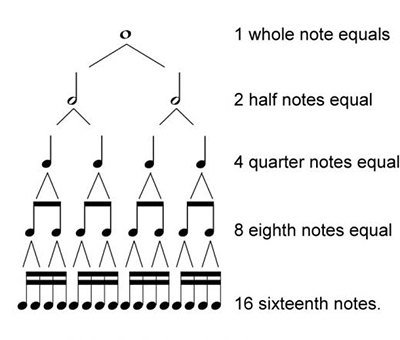
Since 4/4 is used often, to complicate things, it’s also called common time, and a bold C is sometimes used to represent 4/4. (There is also one with a line through it or “cut” time, which equals 2/2.) 4/4 = 2/2 except the unit of measure is the half note. A march would typically be most often in 2/4 or even 2/2. These duple times are all divisible by two.
We musicians always come up with unique ways to remember things. We use food words to learn some of these rhythms! These will assist you.
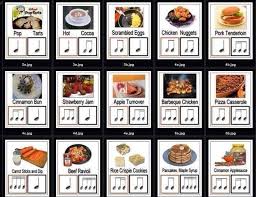
Music has silences too. How are these notated? Each note value has a corresponding written rest value. Whole rest, half rest, quarter rest, eighth rest and so on. Dots following a rest mean the same thing as a dot after a note. Setting the metronome and naming these fruits while also counting the rests should help.
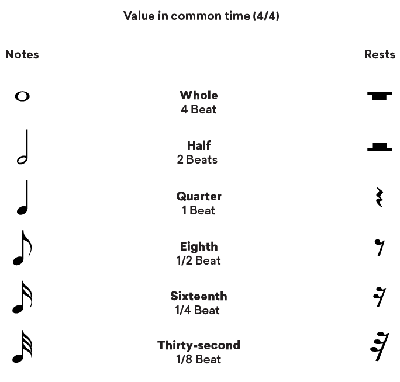
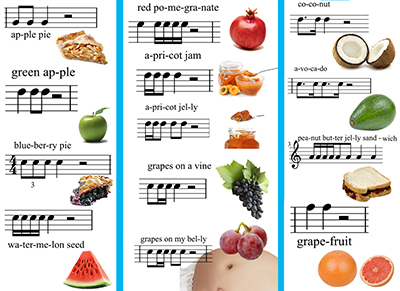
Standard time is far from “common.” Astor Piazzolla wrote gorgeous, infectious music in 4/4 time, and built in freedoms for his instrument the bandoneon, over the steady beat in his piece Oblivion. More common or simple time signatures or meters, include 2/4, 4/4, 2/2, 4/2.
Another well-known rhythm is ¾, typically used in the waltz. The quarter note gets one beat and there are 3 of them per bar. One-two-three; one-two, three. 3/2 is less common but one encounters it in Stravinsky’s Firebird Suite—3 slow and stately half note beats per bar.
When an 8 is the bottom number these meters indicate that the eight note gets one beat. These multiple notes are grouped in threes: 3/8, 6/8, 9/8, 12/8. A quicker 6/8 will feel like two triplet-beats; in 9/8 we feel 3 triplet beats, and 12/8, 4 triplet beats. Stravinsky’s Firebird opens with a stately, slow 12/8, with 12 beats in the bar, then, when it gets faster, it moves to a 4 feel. The dotted quarter then gets one beat. The second movement is in a fast 6/8. Half way into the piece we accelerate, and soon we’re playing one beat to a bar. The rhythm is so very distinctive, and perhaps this is why it is such an exciting piece.
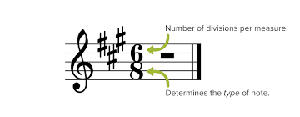
Ravel: Daphnis et Chloe – Part III: Danse generale (Timothy Hutchins, flute; Montreal Symphony Orchestra Chamber Choir; Montreal Symphony Orchestra; Charles Dutoit, cond.)
If we’re lucky, the time signature remains constant in a musical selection. But in more contemporary music we encounter changes of meter within the piece of music, and complex time signatures with asymmetrical or irregular numbers of beats. This is when life becomes complicated for musicians. The end of Daphnis and Chloé Ballet in Three Parts by Ravel, is in 5/4 or 5/8, as is Gustav Holst’s The Planets first movement Mars the Bringer of War. You can actually encounter quite a varying number of beats in the bar.
Holst: The Planets, Op. 32 – I. Mars, the Bringer of War (Royal Scottish National Orchestra Chorus; Royal Scottish National Orchestra; David Lloyd-Jones, cond.)
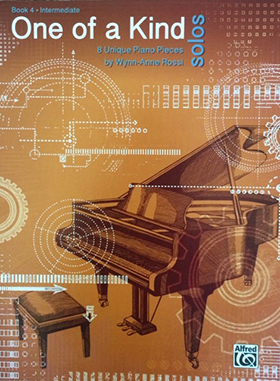
Musicians have devised even more silly ways to learn these. For 5/8 I learned the saying,
“What is this a-bout? What is this a-bout?” and for 7/8 “Why is this so di-ffi-cult. Why is this so di-ffi-cult?” or “What are you harp-ing a-bout?”
Less experienced players can learn these rhythms in a piece written by my friend, composer and piano teacher Wynn-Anne Rossi, in her collection of One of a Kind Piano Solos. Asymmetry for piano solo, uses both 7/8 and 5/8.
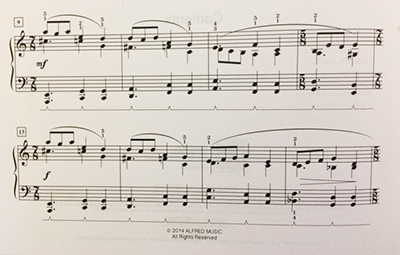
When I was a young professional I wondered if I would ever be able to count the complex rhythms in Stravinsky’s Rite of Spring. The meter changes constantly, sometimes every bar, and includes really irregular meters such as 11/4, 7/4, 5/8, and later 3/16, 5/16 and even 2/16. This is when we really need the conductor (as much as I hate to admit it!) But even more complicated works have become second nature for musicians, and we orchestral players are ready even without a degree in calculus.
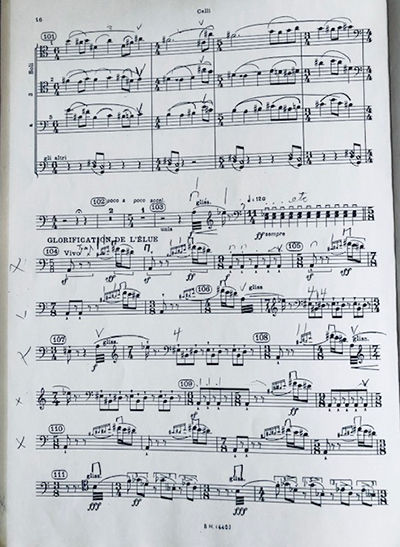
Stravinsky’s Rite of Spring
Now that we’ve examined both note-reading and meter, let’s all approach our pieces with confidence.
Tchaikovsky: 6 Morceaux, Op. 51: No. 6. Valse sentimentale (arr. for cello and piano) (Andres Diaz, cello; Samuel Sanders, piano)

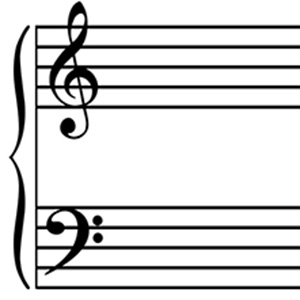



Please do polyrhythms! Amateur here (mainly vocal ensemble), and I’m fine on simpler ones (2-3, 3-4) but anything more unusual happening between parts – I end up in awe of how our conductor makes it looks so effortless…